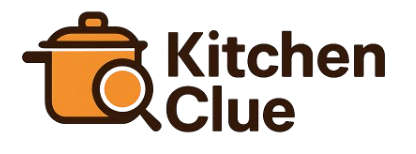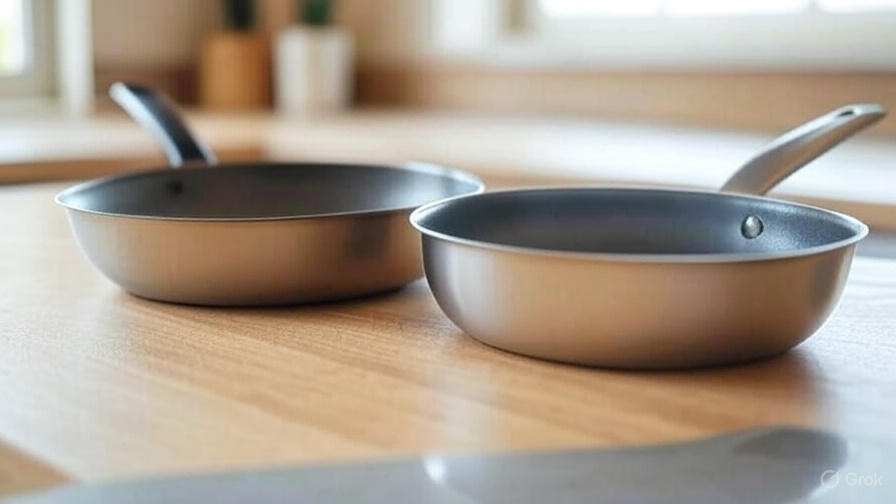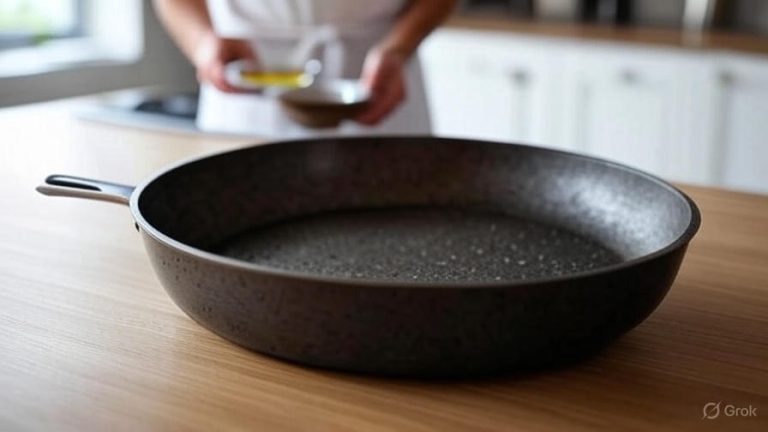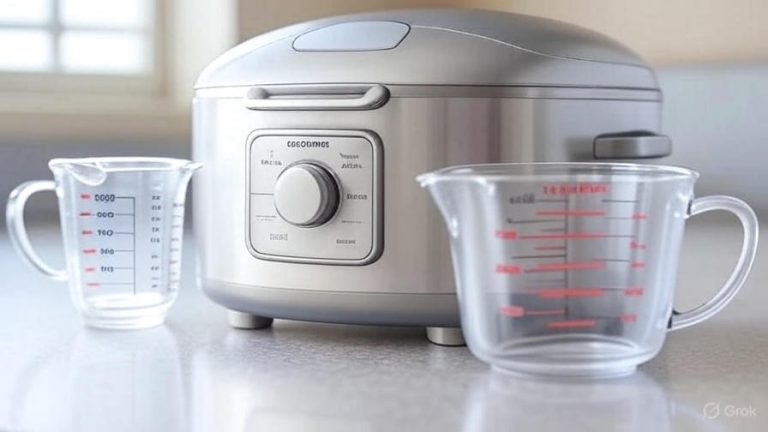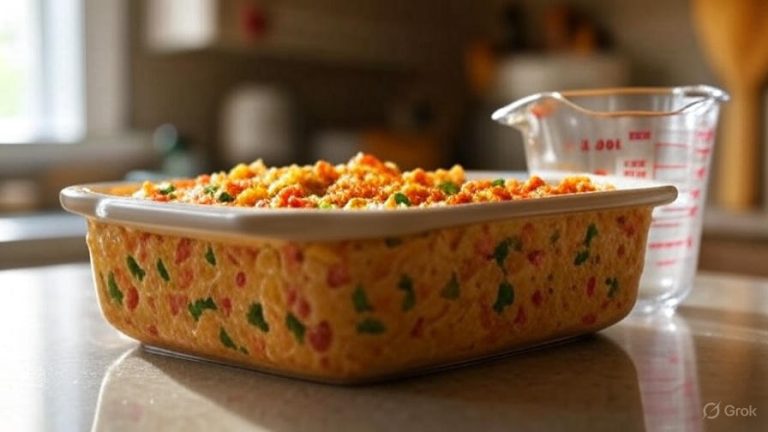10 Inch vs 12 Inch Frying Pan
Home cooks face countless decisions when building their kitchen arsenal, but few choices impact daily cooking more than pan size. The debate between 10-inch and 12-inch frying pans has raged in kitchens worldwide, with passionate advocates on both sides. This comprehensive guide will help you determine which size best suits your cooking style, kitchen space, and culinary ambitions.
The Foundation: Understanding Pan Dimensions
A frying pan’s diameter determines its cooking surface area, which directly affects how much food you can prepare simultaneously. The 10-inch pan offers approximately 78 square inches of cooking space, while the 12-inch version provides around 113 square inches. This 35 square inch difference might seem modest on paper, but it translates to significant practical implications in real-world cooking scenarios.
The cooking surface area calculation reveals why these two inches matter so much. When you increase diameter by just two inches, you gain nearly 45% more cooking space. This expanded area allows you to spread ingredients more evenly, reducing overcrowding and improving heat distribution throughout your meal preparation.
Cooking Capacity: Small Batches vs Family Meals
The 10-inch skillet excels at preparing meals for one to two people. You can perfectly sear a single chicken breast, cook two eggs sunny-side up, or sauté vegetables for a side dish. The compact size ensures even heat distribution across the entire surface, preventing hot spots that can burn your food while leaving other areas undercooked.
Home cooks who regularly prepare meals for three or more people will find the 12-inch pan more practical. This larger cooking surface accommodates multiple protein portions simultaneously, allows you to brown larger quantities of aromatics, and provides space for one-pan meals that feed the whole family. The extra diameter proves invaluable when making dishes like paella, large omelets, or stir-fries that require tossing ingredients freely.
Restaurant professionals often gravitate toward 12-inch pans because they can handle larger portions efficiently. The increased surface area reduces cooking time when preparing multiple servings, which directly impacts kitchen productivity during busy service periods.
Heat Distribution and Temperature Control
Smaller pans typically heat more evenly due to their compact size. The 10-inch frying pan reaches target temperatures faster and maintains consistent heat across its entire surface. This uniform heating makes it ideal for delicate tasks like making crepes, cooking fish fillets, or preparing sauces that require precise temperature control.
The 12-inch pan takes longer to heat evenly, especially on smaller burners. However, once properly heated, it offers excellent temperature zones that skilled cooks can exploit. You can sear proteins on the hottest center area while keeping vegetables warm on the cooler edges. This temperature variation becomes an advantage when preparing complex dishes that require different heat levels for various components.
Induction cooktops work particularly well with 10-inch pans because the magnetic field covers the entire base more effectively. Gas ranges, conversely, often provide better results with 12-inch pans since the flame can spread across the larger diameter more efficiently.
Storage and Kitchen Space Considerations
Cabinet space remains a premium commodity in most kitchens, making storage efficiency crucial when selecting cookware. The 10-inch pan fits comfortably in standard kitchen cabinets and can nest easily with other cookware. Its compact size makes it perfect for apartment dwellers, small kitchen owners, or anyone dealing with limited storage space.
The 12-inch frying pan requires more cabinet real estate and may not fit in smaller dishwashers. Some compact kitchen designs simply cannot accommodate larger cookware without sacrificing storage for other essential items. Before investing in a 12-inch pan, measure your cabinet dimensions and dishwasher capacity to ensure proper fit.
Wall-mounted pot racks can accommodate either size, but the 12-inch pan’s weight and dimensions make it more challenging to hang securely. The additional weight also affects how comfortably you can handle the pan during cooking, especially when it’s filled with food.
Weight and Handling Differences
The 10-inch pan typically weighs 1-2 pounds less than its 12-inch counterpart, depending on construction materials. This weight difference becomes significant during extended cooking sessions or when you need to flip foods by tossing them in the pan. Lighter pans reduce arm fatigue and provide better control during delicate maneuvers.
Cast iron pans amplify these weight differences dramatically. A 10-inch cast iron skillet weighs approximately 5 pounds, while a 12-inch version can tip the scales at 8 pounds or more. This additional weight affects not only handling comfort but also heat retention characteristics and cooking performance.
Non-stick aluminum pans show less dramatic weight variations, but the difference still impacts daily usability. The 10-inch version offers superior maneuverability for tasks like flipping pancakes or rotating ingredients during cooking.
Material Performance Across Different Sizes
Stainless steel performs consistently across both sizes, but the 12-inch version may develop hot spots more easily if your burner doesn’t match the pan’s diameter. The larger surface area requires more time to reach optimal cooking temperature, but it maintains heat well once properly heated.
Carbon steel pans develop seasoning more evenly in the 10-inch size because the smaller surface area receives more uniform heat treatment. The 12-inch carbon steel pan requires more attention during the seasoning process but offers superior performance once properly maintained.
Non-stick coatings face different challenges in each size. The 10-inch pan’s coating typically lasts longer because it experiences less thermal stress and requires less oil or butter for cooking. The 12-inch non-stick surface may wear more quickly in high-heat applications but provides better food release for larger quantities.
Versatility and Cooking Techniques
The 10-inch frying pan excels at techniques requiring precise control and even heating. You can make perfect French omelets, achieve consistent browning on smaller proteins, and create smooth pan sauces with minimal effort. Its compact size makes it ideal for tasks like toasting spices, melting butter, or preparing small-batch reductions.
The 12-inch pan opens up cooking possibilities that smaller pans simply cannot handle. You can prepare large frittatas, sear multiple steaks simultaneously, or create impressive one-pan meals that showcase various ingredients. The extra space allows for proper browning of larger protein portions without overcrowding.
Deep-frying capabilities differ significantly between sizes. The 10-inch pan limits you to small batches of foods like doughnuts or chicken tenders, while the 12-inch version can accommodate larger quantities and bigger items like whole fish or large pieces of meat.
Price Points and Value Considerations
Quality 10-inch frying pans typically cost $20-50 less than comparable 12-inch versions across all material categories. This price difference reflects the reduced material costs and simpler manufacturing requirements for smaller pans. Budget-conscious cooks can often afford higher-quality materials in the 10-inch size compared to entry-level 12-inch options.
Professional-grade pans show even larger price disparities. A restaurant-quality 10-inch stainless steel pan might cost $80, while the identical 12-inch model could reach $120 or more. These premium materials and construction methods amplify the cost differences between sizes.
The value proposition depends entirely on your cooking patterns. If you regularly prepare large meals or entertain frequently, the 12-inch pan’s higher price pays dividends through increased efficiency and capability. Home cooks who primarily make small portions may find the 10-inch option provides better value for their specific needs.
Maintenance and Cleaning Implications
Cleaning requirements scale with pan size, and the 12-inch version demands more time and effort to maintain properly. The larger surface area requires more scrubbing, uses more dish soap, and takes up more space in your dishwasher. Hand-washing becomes more challenging with the increased size and weight.
Seasoning maintenance for cast iron and carbon steel pans becomes more complex with the 12-inch size. The larger surface area requires more oil for proper seasoning, and achieving even coverage across the entire pan takes additional time and attention. However, once properly seasoned, both sizes perform similarly in terms of non-stick properties and rust resistance.
Storage cleaning becomes important with larger pans. The 12-inch version requires more thorough drying to prevent water spots and corrosion in tight cabinet spaces. Its larger surface area also collects more dust and grease when stored openly.
Special Cooking Applications
Baking applications favor the 10-inch pan in most home ovens. It fits comfortably in standard ovens without blocking air circulation, making it perfect for dishes like cornbread, frittatas, or upside-down cakes. The compact size ensures even baking results and easier removal from the oven.
The 12-inch pan excels at campfire cooking and outdoor grilling applications. Its larger surface area makes it ideal for cooking over open flames, and the extra space accommodates the irregular heat distribution common in outdoor cooking situations. The increased capacity also suits group camping scenarios where you need to feed multiple people efficiently.
Specialty techniques like flambéing work better with the 12-inch pan because the larger surface area provides more space for alcohol to burn safely. The extra diameter also reduces the risk of flames reaching your hand or arm during the ignition process.
Making the Right Choice for Your Kitchen
Your cooking frequency and typical meal sizes should guide your decision. Daily cooks who prepare fresh meals for small households will find the 10-inch pan more practical and enjoyable to use. The compact size encourages more frequent cooking by reducing cleanup time and storage hassles.
Large families or frequent entertainers benefit significantly from the 12-inch pan’s increased capacity. The ability to prepare larger quantities in a single pan reduces cooking time and simplifies meal preparation for multiple people. This efficiency becomes especially valuable during busy weeknight dinners or weekend entertaining.
Consider your physical capabilities when making this decision. If you have limited arm strength or mobility issues, the 10-inch pan’s reduced weight and easier handling make it the more practical choice. The smaller size also requires less counter space for preparation and cooling.
The Verdict: Size Matters in Different Ways
Both pan sizes serve distinct purposes in the modern kitchen, and many serious home cooks eventually own both. The 10-inch frying pan provides precision, efficiency, and convenience for everyday cooking tasks. Its compact size makes it perfect for quick meals, delicate preparations, and kitchens with limited space.
The 12-inch frying pan offers capacity, versatility, and efficiency for larger cooking projects. It excels at feeding multiple people, preparing one-pan meals, and handling cooking techniques that require generous surface area.
Your final decision should reflect your cooking style, household size, and kitchen constraints. Neither size is inherently superior – they simply excel in different applications. The key lies in honestly assessing your cooking patterns and space limitations to determine which size will enhance your culinary experience most effectively.
Consider starting with the size that matches your most common cooking scenarios. You can always add the other size later as your cooking skills develop and your kitchen needs evolve. The investment in the right pan size will pay dividends in cooking enjoyment and meal quality for years to come.
